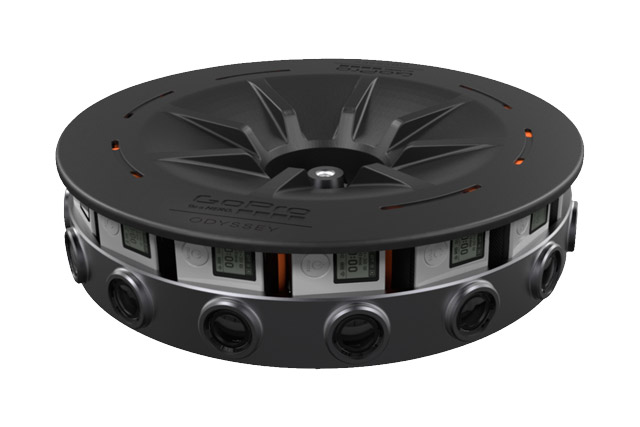
Announced at the Google I/O developer conference in Mountain View, California this Thursday, Google said that it will use the expertise of both IMAX and Chinese firm Yi Technology to develop a new generation of 360-degree cameras, designed specifically to film for VR.
The set up will not only record VR content, but will also upload it to Google’s Jump platform for tweaking and editing.
Related: Disney agrees to use Nokia’s OZO camera for VR content related to its movies
Not much information has been given about when we can expect the partnership’s developments to be made available. It could well be some time, as Google previously developed a 360-degree camera rift with GoPro, called Odyssey, and that took a famously long time to come to market.
That product is however now available for some, with Google said to be shipping it out to select partners. Wevr and the New York Times have both purportedly made use of the GoPro-powered rig (thanks Variety) and Google has also outfitted its YouTube recording facilities with the same cameras for those who want to use them.
Chances are that whatever price tag Google ends up putting on its IMAX/Yi Technology camera set up, it will be a high one. Nokia’s Ozo camera is one of the most advanced VR camera rigs available right now, with hot swappable storage and battery packs, but it comes at a hefty price of $60,000.
Whether Google will look to borrow a few feature ideas from Ozo and some of the other competitor VR camera rigs remains to be seen. Jump integration is guaranteed though.
The firm also recently announced that it was revamping many of its smartphone apps to better support VR content, so expect a continued drive from Google towards a virtual future over the next few months.
Editors' Recommendations
- This new VR headset beats the Vision Pro in one key way and is half the price
- Vision Pro durability test turns up a few surprises
- The Apple Vision Pro has given VR its iPhone moment
- What is VR?
- Apple’s secret VR headset just leaked an ingenious idea




